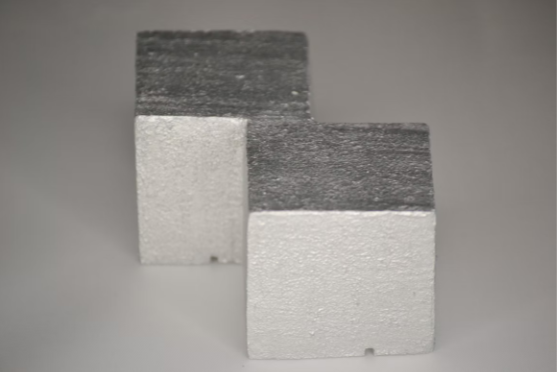
Planning a remodel, clearing out a garage, or managing a jobsite demo always leads to one big question: where does all the debris go? For most projects, the most efficient solution is a roll off dumpster, a large, temporary container delivered to your location and hauled away when the work’s done. At Junk Rescue AZ, we’ve helped countless homeowners and contractors make cleanouts and demolition work simpler, faster, and more affordable by providing dependable dumpster rental options across Arizona.
This guide will walk you through everything you need to know, sizes, pricing, permits, placement, and a few pro tips, to help you rent confidently and finish your project without stress or surprises.
What a Roll Off Dumpster Is (and How It Differs)
A roll off dumpster is a heavy-duty steel container transported on a specialized truck that “rolls off” onto your driveway, pad, or jobsite. It’s built for short-term use during projects like remodels, roofing, landscaping, construction, or storm cleanup.
Unlike the small, lidded dumpsters behind stores and apartments, roll offs don’t have a fixed pickup schedule. You rent one for a set number of days, typically 7 to 10, and call for pickup or swap-out when it’s full.
Why most people choose roll offs:
- Capacity: They hold 10 to 40 cubic yards of debris, many pickup truck loads in one container.
- Efficiency: One delivery and one pickup keep things simple and fast.
- Flexibility: Choose your size, rental window, and pickup timing.
- Safety: Keeps sharp or dusty materials off your walkways and jobsite.
If your project will create more than a few pickup loads of debris, or if it includes heavy, messy materials, a roll off saves time and multiple trips to the dump.
Choosing the Right Size
Roll off dumpsters come in standard sizes, measured in cubic yards. Here’s a quick guide to help you pick:
- 10-yard: Great for small cleanouts, bath remodels, or a couple of rooms of junk.
- 15-yard: Ideal for mid-size projects and homes with tighter driveways.
- 20-yard: The most popular choice, perfect for kitchen remodels, roofing, or multi-room cleanouts.
- 30-yard: Handles larger renovations or light construction debris.
- 40-yard: Designed for major remodels, commercial buildouts, and large demolition work.
Simple rules of thumb:
If your debris is bulky but light, like furniture or trim, size up to avoid paying for a second haul.
If your materials are dense or heavy, like concrete, roofing, or plaster, size down to stay under weight limits and road regulations.
If you’re unsure, photos or a quick video of your debris can help us recommend the perfect size right away.
What Drives the Price
Most rental quotes include delivery, pickup, and disposal up to a weight allowance, along with a set number of rental days. Your total price depends on several factors:
- Size: Larger containers cost more, but can save you from needing a second one.
- Included Weight: Every rental includes a tonnage cap; going over adds per-ton fees.
- Material Type: Mixed debris often costs more than clean loads of concrete, yard waste, or metal.
- Rental Period: Standard rentals include 7–10 days; extensions are billed daily.
- Distance & Access: Long drives, tight spaces, or steep placements can add surcharges.
- Local Fees: City permits, landfill fees, and environmental charges vary by area.
Quick comparison checklist:
- Base rate (delivery, pickup, disposal)
- Included tons and cost per overage
- Included days and daily extension rate
- Discounts for clean loads (concrete/metal)
- Permit responsibility and cost
- Any extra fees for long hauls or tricky placements
- Weight tickets available on request
Gather this info from at least two providers to compare “apples to apples” before booking.
Placement, Access, and Permits
Driveway placement is usually the easiest, private property, stable surface, and no permit required. If you must place it on a street or public area, your city may require a right-of-way permit and reflective markers.
Before delivery:
- Clear 60–80 feet of straight access, 12–14 feet width, and at least 20 feet of vertical clearance.
- Mark sprinklers, utility covers, or drains.
- Use wood boards under wheels on new concrete or pavers to prevent scuffs.
- Choose a level, firm surface, avoid steep slopes or soft ground.
Checking these small details ensures smooth delivery and pickup while protecting your property.
What You Can (and Can’t) Load
Commonly accepted materials:
- Drywall, lumber, cabinetry, flooring
- Furniture and mattresses (fees may apply)
- Roofing shingles (watch the weight)
- Yard debris, branches, and storm waste
- Clean concrete, brick, rock, or dirt loads (usually smaller bins only)
Prohibited or special handling items:
- Paints, solvents, fuels, or oils
- Batteries, electronics, fluorescent bulbs
- Appliances with refrigerants unless tagged
- Medical or biohazard waste
- Asbestos or suspected asbestos
- Pressurized tanks (propane, aerosols)
When in doubt, ask before loading, one restricted item can turn an affordable load into a costly reclassification.
Loading Tips for Safety and Efficiency
How you load affects both space and safety.
- Start heavy and low: Place dense items first, centered for balance.
- Break down bulky items: Cut branches, disassemble furniture, and nest boxes to fit more in one haul.
- Keep debris level with the top: Drivers can’t safely tarp overfilled bins.
- Keep liquids out: Rain or leftover paint adds weight and disposal issues.
- Stage before delivery: Pre-pile debris to load quickly and avoid extra rental days.
These habits prevent extra fees and help your pickup stay on schedule.
Scheduling Tips
For weekend projects or peak seasons, book 3–5 days in advance.
Ask for a call-ahead ETA so you can clear space before delivery.
If you need more time, extend your rental at least a day ahead of pickup to avoid truck-roll charges.
Contractors often schedule swap-outs based on project phases, like after demo or before roofing starts, to keep crews moving efficiently.
Sustainability Options
Sorting materials can reduce costs and waste:
- Concrete and masonry can often be recycled at lower tipping rates.
- Metal sometimes earns a rebate or discounted disposal.
- Yard debris can be composted when kept clean and separate.
- Usable fixtures, cabinets, or doors can be donated instead of dumped.
We encourage you to ask about recycling or donation programs when scheduling your rental.
Common Mistakes to Avoid
- Choosing too small a bin: A second haul usually costs more than sizing up slightly.
- Ignoring weight caps: Heavy debris hits limits quickly, use smaller bins for dense material.
- Skipping permits: Avoid fines by checking local street placement rules.
- Last-minute schedule changes: Notify dispatch early for smooth extensions or reschedules.
- Loading prohibited items: Keep them out from the start to prevent extra disposal charges.
A little planning keeps everything predictable from start to finish.
Final Thoughts
With a little preparation, understanding size, weight, placement, and allowed materials, you can handle waste removal like a pro. Renting a roll off dumpster doesn’t have to be complicated or costly when you know what to expect. At Junk Rescue AZ, we take pride in helping you find the right container, set clear pricing, and keep your site safe and clean from delivery to pickup.
When your next project calls for fast, reliable cleanup, let us handle the heavy lifting so you can focus on the build, not the debris.






